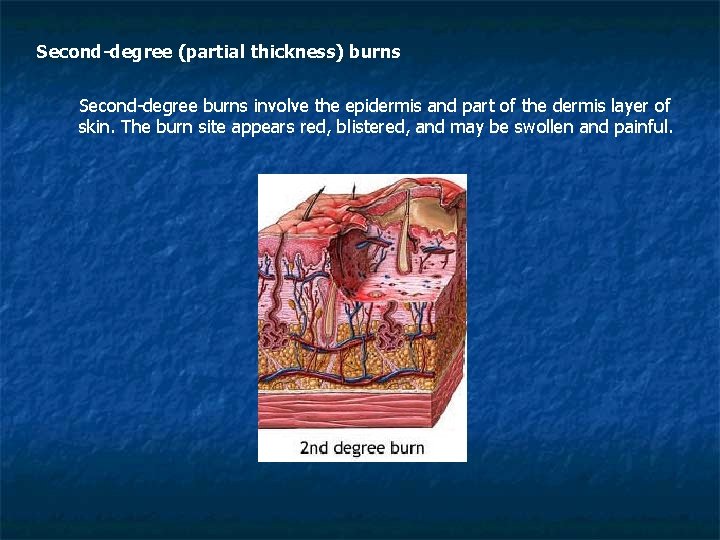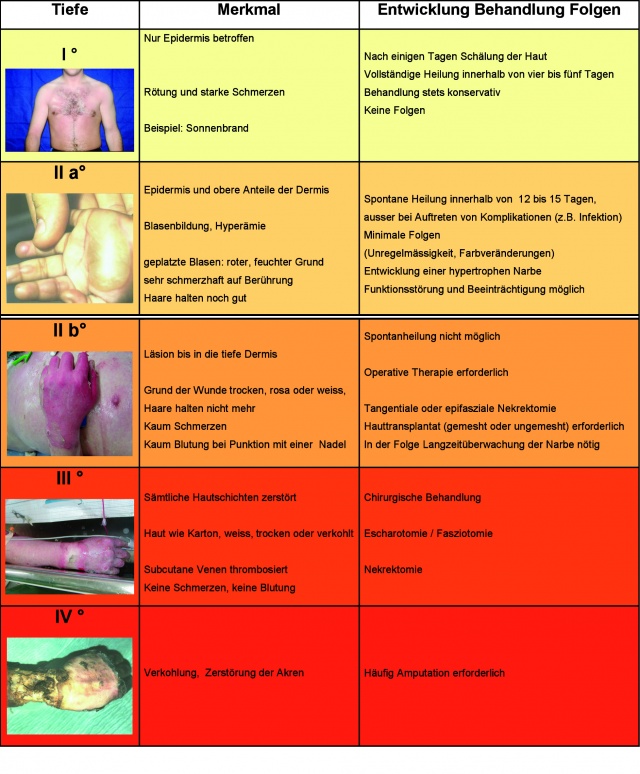
A 2nd Degree burn is an injury to the area of injury and therefore a serious burn injury. The area involved is a very sensitive area and therefore care must be taken in the treatment and the healing process. These burns involve all layers of the skin including the thin, flaky fatty tissue beneath the outermost layers.
When these burns occur, they are often accompanied by the presence of a large, red livid burn on the area around the burn. These are often serious burns requiring extensive medical attention. The first code which represents the highest level of burn (whether more than one burn exists) is indicated. For example, a 25-year-old has a first degree burning of his right forearm and second degree burning of his left index finger and thumb and third degree burns of both the left side of his body and the lower abdomen.
Depending on the severity of the injury, the various treatments can range from minimal to complete. There have been many studies on various treatments for burns, and some of these treatments include the use of creams and ointments, the use of topical medications, and, in rare cases, surgery.
One treatment for early burns is ice packs to reduce swelling and redness after the burn. This can be done by applying ice to the affected area for several hours, three or four times a day. If ice does not stop the swelling, a bandage can be worn, but it should be kept away from the affected area.
In some cases, local anesthesia may be required. Local anesthesia is sometimes used for minor burns, but surgery may be required in other cases. A second procedure, called sclerotherapy, may be required if the initial burns cannot be treated with local anesthesia. In sclerotherapy, a local anesthetic is injected into the affected area to stop further spread of the infection, but this method has not yet been approved by the FDA.
If the initial burn was successfully healed, the next step is to clean the wound after it has healed. The wound is covered with gauze to protect it. After two weeks, your doctor may start treating the wound with an antibacterial cream. Antibiotic cream should be applied regularly to kill bacteria that can cause infection. scarring.

You will be told to change the bandage every two days after two weeks
The antibiotic treatment will keep the wound moist and reduce scarring. You should also use a moisturizing cream after this time. It is important that you keep the wound clean to avoid spreading bacteria. In most cases the wound will heal without any surgery.
When the wound heals, you should try to apply moisturizer to help protect the wound and keep it moist. You should avoid scratching it as the burn will become irritated and dry out if the skin is damaged during the healing process.
It is also a good idea to protect yourself from sunburn by wearing sunscreen. This way if there is a flare-up from the sun you can deal with it quickly and minimize the risk of scarring. Also if you are traveling then you can wear a hat.
It is important that you explore the treatment options available for your burn and discuss your options with your doctor. Your doctor will be able to give you more detailed information. about the treatments available, the side effects and possible complications which may occur.
It is also important that you do not rush into a decision about your burn. It is important that you work with your doctor to determine what option will be best for your particular burn.
If you are having difficulty healing the burn, it may take some time for your body to heal and you should only opt for treatment options that are indicated by your doctor. Your physician will be able to provide you with more information.